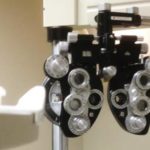1. Based on a large Swedish cohort screened for open-angle glaucoma, the estimated preclinical detectable phase for glaucoma was estimated at 10.7 and 10.1 years by two different calculation methods.
2. The prevalence of open-angle glaucoma in the cohort was 1.3% at the time of screening, with an annual incidence of 0.12% for cases undetected at screening but later diagnosed clinically.
Evidence Rating Level: 2 (Good)
Study Rundown: Primary open-angle glaucoma is a leading cause of vision loss and blindness. Though past studies on population screening for glaucoma have shown mixed results, some trials have reported significant vision benefits. This study aimed to contribute information on the utility of screening efforts by reporting the length of the preclinical detectable phase (PCDP) for open-angle glaucoma. PCDP, or sojourn time, is the period in which disease can be detected on screening but not clinically. Data from about 2,000 subjects were drawn from a cohort of 33,000 Swedish patients who were screened for glaucoma then followed up for 20 to 25 years. The prevalence of open-angle glaucoma at the time of screening was 1.3%, while the clinical incidence over the follow-up period was 0.12% per year. Based on the ratio of these prevalence and incidence rates, the mean PCDP was 10.7 years. Based on an alternative calculation using Bayesian interference and a Markov chain Monte Carlo algorithm, the estimate was 10.1 years. This means that it would take, on average, 10 to 11 years for the cases detected by screening to be diagnosed clinically had the screening not taken place. Though the generalizability of these estimates to other settings is limited by the ethnic homogeneity of the cohort, this long sojourn time suggests that screening even at an interval of five or more years could have clinical utility. However, the success of a screening program relies on high screening sensitivity, achieved here using initial IOP screening followed by full workup at a subsequent visit, which presents substantial logistical challenges.
Click to read the study in JAMA Ophthalmology
Click to read an accompanying editorial in JAMA Ophthalmology
Relevant Reading: Screening for glaucoma in adults: A systematic review for the U.S. Preventive Services Task Force
In-Depth [retrospective cohort]: The initial population screening was conducted between 1992 and 1997 in Sweden. At that time, intraocular pressure (IOP) and visual acuity were assessed and fundus photographs collected. All patients with IOP above 25 mmHg, suspected or evident glaucoma based on optic disc exam, retinal nerve fiber defects, optic disc hemorrhage, exfoliation syndrome, or diagnosed glaucoma in a first-degree relative returned for follow-up visits, at which Humphrey visual field measurement, tonometry, and exam were performed. Glaucoma was originally diagnosed in 427 patients based on two consecutive abnormal or borderline visual field results. Over subsequent follow-up through 2017, about 1,000 glaucoma diagnoses were made based on optic disc appearance in patients who had originally screened negative. The estimated sensitivity of screening was 94% [95% confidence interval (CI) 93-96%]. Patients who screened positive originally but did not meet diagnostic criteria for glaucoma were excluded from the analysis. The 95% CI for the PCDP estimated by the prevalence over incidence method was 8.71-13.0, while the 95% credible interval for the algorithmic method was 8.9-11.2. PCDP was longer for younger patients (aged 55-59 or 60-64).
Image: PD
©2022 2 Minute Medicine, Inc. All rights reserved. No works may be reproduced without expressed written consent from 2 Minute Medicine, Inc. Inquire about licensing here. No article should be construed as medical advice and is not intended as such by the authors or by 2 Minute Medicine, Inc.


